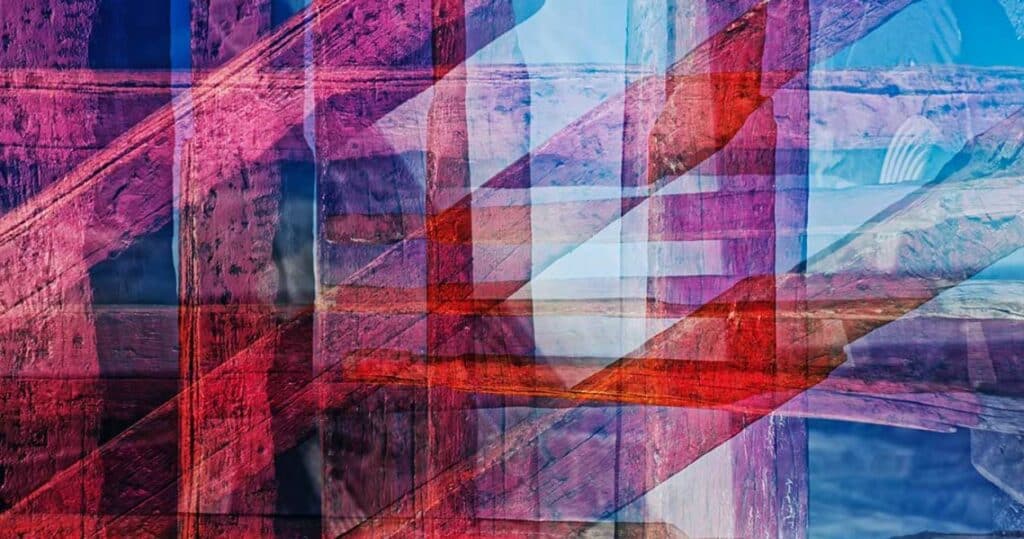This article “The Intricate Art of Lace Making: 10 Master Lace Artists”, will take you on a journey through the enthralling world of lace production. Along the way, you will be introduced to ten expert lacemakers who have pushed the boundaries of this delicate technique.
The technique of manufacturing lace, which involves weaving thin threads into beautiful designs in a seamless manner, has captivated both the hearts of those who make it and those who admire it for ages. Lacemakers who are experienced at the process transform ordinary threads into stunning works of art by using a series of labor-intensive techniques such as looping, twisting, and braiding.
The fashion industry is a dynamic and dynamically changing one, and it is an industry in which innovation has no limits. The fact that it draws inspiration from many different elements of our existence, most notably the myriad cultures that we have around the world, makes it even more fascinating.Read more!
10 Master Lace Artists You Should Know
The production of lace is a type of art that requires a high level of precision, originality, and a profound awareness for the exquisiteness of fine threads. Throughout the course of history, there have been numerous periods in which master lace artists have emerged, each of them has left an unmistakable stamp on the world of lace. The following is a list of ten master lace artists that you ought to be familiar with. These lace artists have taken this craft to new heights and continue to inspire lace aficionados all over the world:
1. Sophie Hallette

Since the late 19th century, the name Sophie Hallette has been closely associated with sophisticated style and high-end goods due to the gorgeous French lace that it produces. Their incredibly detailed designs and unrivaled level of craftsmanship have been used to embellish the work of haute couture designers all around the world.
Learn more about Sophie Hallette’s lace and have a look at some of her designs by reading more.Click here!
Artistic Profile: Sophie Hallette
| Aspects | Description |
| Name: | Sophie Hallette |
| Legacy: | Renowned for exquisite French lace |
| Founded: | Established in the 19th century |
| Reputation: | Symbol of elegance and luxury |
| Clientele: | Preferred by haute couture designers |
| Intricate Designs: | Known for intricate and captivating lace |
| Worldwide Recognition: | Respected globally in the world of lace |
| Luxury Endorsements: | Adorns creations of top fashion designers |
2. Carlotta de Bevilacqua

Carlotta de Bevilacqua is a well-known lace maker from Venice who is renowned for producing work that is both delicate and detailed. She has been manufacturing lace for more than four decades, and her work has been displayed in museums and galleries all around the world.
Artistic Profile: Carlotta de Bevilacqua
| Aspects | Description |
| Name: | Carlotta de Bevilacqua |
| Origin: | Italian |
| Specialization: | Contemporary lace innovation |
| Notable Achievements: | Award-winning lace installations |
| Contribution: | Pushing boundaries of lace art |
| Style: | Fusion of modern and traditional |
| Impact: | Renowned for redefining lace |
| Legacy: | Inspiring a new generation of lace artists |
3. Ulrike Voelcker

Ulrike Voelcker is a German lace artist who combines modern design with time-honored workmanship. She has a passion for modernising ancient lace techniques and is dedicated to doing so in her work. Her unconventional method has helped her garner notoriety on a global scale as well as a number of prestigious accolades.
Artistic Profile: Ulrike Voelcker
| Aspects | Description |
| Name: | Ulrike Voelcker |
| Origin: | German |
| Expertise: | Modernizing traditional lace techniques |
| Innovative Approach: | Combines contemporary design with lace craftmanship |
| Recognition: | Internationally acclaimed |
| Awards: | Multiple awards for lace artistry |
| Impact: | Inspiring a new generation of lace artists |
| Contribution: | Pushing the boundaries of lace making |
4. Punto in Aria

Punto in Aria is a delicate style of needle lace that was first developed in Italy in the 17th century. It is distinguished by its openwork patterns and airy designs. This time-honored technique has been brought back to life by contemporary artists such as Caterina Vagnozzi, who have infused it with a modern style to produce works of art that successfully bridge the gap between the past and the present.
Artistic Profile: Punto in Aria
| Aspects | Description |
| Origin: | 17th-century Italy |
| Lace Style: | Delicate needle lace |
| Characteristics: | Airy, openwork designs |
| Modern Artisans: | Caterina Vagnozzi and others |
| Revival: | Breathed new life into historic technique |
| Contemporary Aesthetic: | Combines tradition with a modern sensibility |
| Timeless Allure: | Bridges past and present beautifully |
| Enduring Craft: | Appeals to a new generation of lace enthusiasts |
5. Tonder Lace

Tonder lace is renowned all over the world for its exquisite flower patterns and painstaking craftsmanship. This lace originates from Denmark. This Danish custom has been kept alive thanks in large part to the Tonder Lace School, which has educated countless generations of talented lace makers and fostered a community of people who are committed to ensuring the continuation of the art form.
Artistic Profile: Tonder Lace
| Aspects | Description |
| Origin: | Denmark |
| Style: | Intricate floral motifs |
| Craftsmanship: | Meticulous and precise |
| School: | Tonder Lace School, Denmark |
| Tradition: | Rich history in Danish culture |
| Community: | Dedicated group of lace makers |
| Techniques: | Specialized techniques for floral patterns |
| Influence: | Impacts fashion and design globally |
6. Reticella Lace

The rich history of reticella lace can be traced back to Italy in the 16th century and is characterized by its use of delicate stitching and distinctive geometric patterns. This time-honored method has been given new life in recent years because of the efforts of contemporary craftspeople like Bianca Menna, who have imbued it with a modern sensibility that reflects the enduring appeal of the art form.
Artistic Profile: Reticella Lace
| Aspects | Description |
| Origin: | 16th-century Italy |
| Technique: | Needle lace characterized by geometric patterns |
| Modern Artisans: | Bianca Menna and others |
| Revival: | Infused with a contemporary sensibility |
| Timelessness: | Appeals to a new generation of lace enthusiasts |
| Historical Charm: | Resonates with the timeless allure of the craft |
| Heritage: | Part of Italy’s rich lace-making tradition |
| Artistic Vision: | Blends the past and present, breathing new life into it |
7. Irina Levitskaya

Irina Levitskaya is a master of Russian bobbin lace. With her intricate designs and great attention to detail, she has taken this time-honored craft to new heights, elevating it to the level of a modern art form. Her work is a shining example of the exquisiteness and intricacy that may be accomplished through the practice of producing bobbin lace.
Artistic Profile: Irina Levitskaya
| Aspects | Description |
| Nationality: | Russian |
| Specialty: | Russian Bobbin Lace |
| Expertise: | Intricate Designs |
| Notable Achievements: | International Recognition |
| Attention to Detail: | Meticulous Craftsmanship |
| Legacy: | Rich Heritage in Lace Making |
| Contributions: | Advancement of Bobbin Lace Art |
| Influence: | Inspiration for Aspiring Lace Makers |
8. Bruges Lace Center

The Bruges Lace Centre, which can be found in Belgium, is committed to conserving the tradition of Bruges bobbin lace, which is a delicate form of lace that is well-known for its exquisite and detailed patterning. The center has established itself as a gathering place for people who are interested in lace as well as artisans, thanks to the exhibitions, workshops, and educational programs that it offers.
Artistic Profile: Bruges Lace Center
| Aspects | Description |
| Name: | Bruges Lace Center |
| Location: | Belgium |
| Specialization: | Preservation of Bruges bobbin lace |
| Programs: | Exhibitions, workshops, and educational activities |
| Community: | Hub for lace enthusiasts and artisans |
| Focus: | Fine, intricate lace patterns |
| Heritage: | Rich history of lace making |
| Contributions: | Vital role in sustaining the art form’s vitality and relevance |
9. Irish Crochet Lace

The elaborate patterns and three-dimensional designs that are characteristic of Irish crochet lace have their roots in the country’s long and illustrious history, which dates back to the 19th century. Modern artists like Maire Treanor are preserving this ancient trade and ensuring that Irish crochet lace will continue to be a successful art form for a very long time.
Artistic Profile: Irish Crochet Lace
| Aspects | Description |
| Origin: | 19th-century Ireland |
| Techniques: | Intricate motifs, 3D elements |
| Materials: | Cotton thread, fine hooks |
| Notable Artist: | Maire Treanor |
| Unique Features: | Floral designs, picots, and decorative fillings |
| Preservation Efforts: | Continuously evolving tradition |
| Modern Influence: | Combines traditional techniques with contemporary elements |
| Enduring Popularity: | Remains a cherished lace style for its timeless beauty |
10. Chantilly Lace

Chantilly lace is appreciated for its beautiful, delicate designs and graceful floral themes. It is named after the French town of Chantilly, which is located in the Loire Valley. Artists like as Hubert Valeri have made significant contributions to the maintenance and development of this traditional lace form by introducing contemporary features without compromising the style’s enduring grace and beauty.
Artistic Profile: Chantilly Lace
| Aspects | Description |
| Origin: | Chantilly, France |
| Style: | Fine, delicate patterns |
| Motifs: | Graceful floral designs |
| Historical Significance: | 17th-century lace tradition |
| Artisan: | Hubert Valeri |
| Modern Influences: | Incorporation of contemporary elements |
| Enduring Elegance: | Timeless and classic |
| Artistic Evolution: | Preservation and innovation |
Certain individuals have emerged over the years as cultural icons in the world of fashion, leaving an indelible mark on the way that we dress and perceive style. These individuals have left an indelible mark on the way that we dress and perceive style.
In a world in which traditional handicrafts are frequently overshadowed by mass production, the art of lace creation stands as a tribute to the enduring charm of handmade workmanship. The tradition of this delicate technique continues to thrive as a result of the unshakable dedication of these expert lace artists and the organisations that support them. As a result, successive generations are enchanted by the everlasting beauty and exquisite designs of lace.
FAQ
What materials are used in the production of lace?
Lace is traditionally made with fine threads such as cotton, silk, linen, or even metallic threads. Modern lace makers, on the other hand, experiment with synthetic fibres and a variety of unusual materials to create unique and contemporary creations.
How long does it take to learn how to make lace?
Learning to make lace needs time, perseverance, and a good eye for detail. It can take months to years to become adept at this delicate craft, depending on the complexity of the technique and the intricacy of the designs.
What are some well-known lace-making techniques?
Bobbin lace, needle lace, crochet lace, and tatting are some well-known lace-making techniques. Each technique has its own distinct qualities, methods, and history, all of which contribute to the diverse and rich landscape of lace creation around the world.





